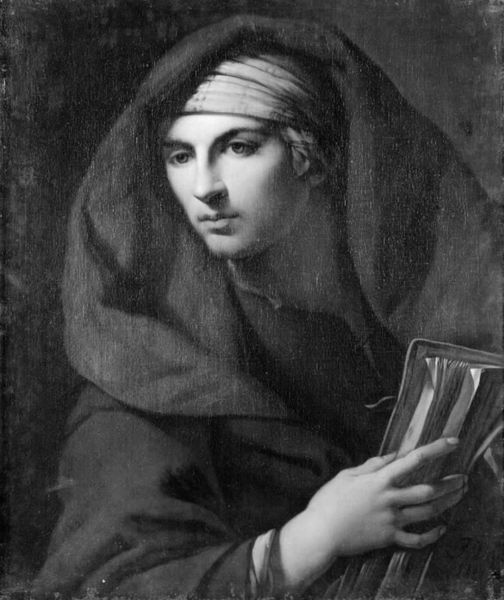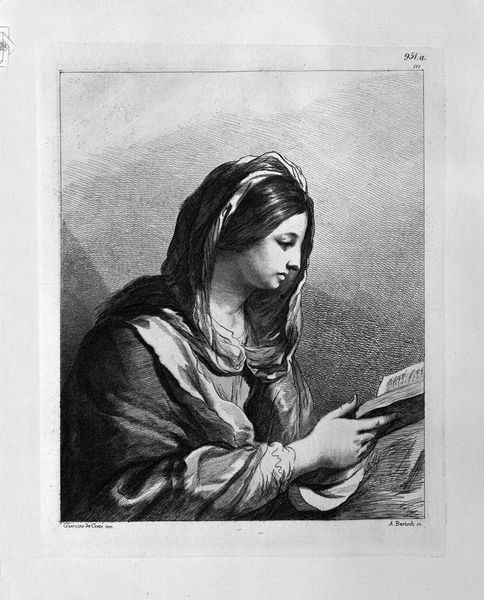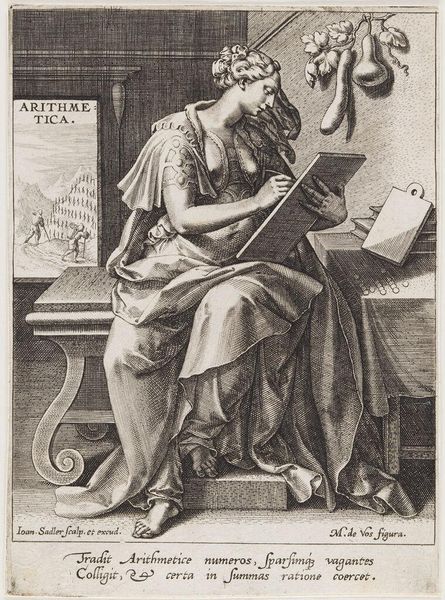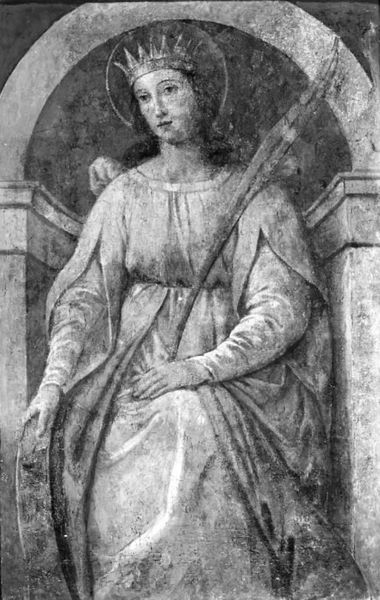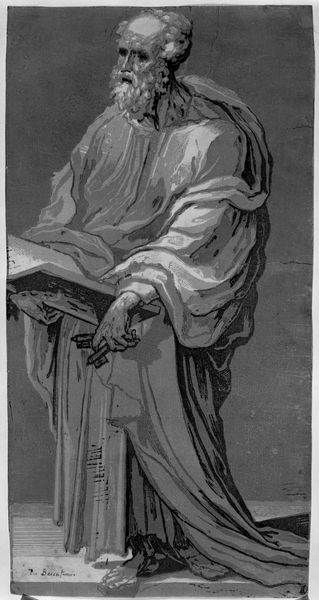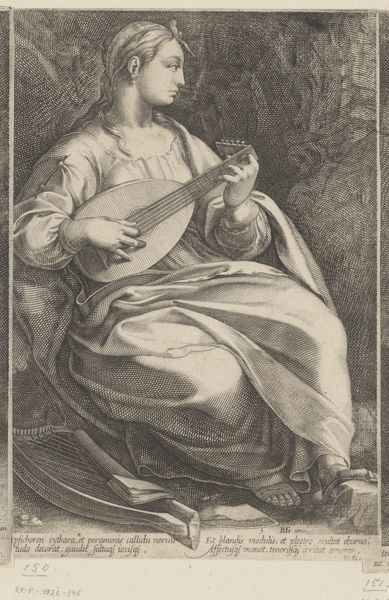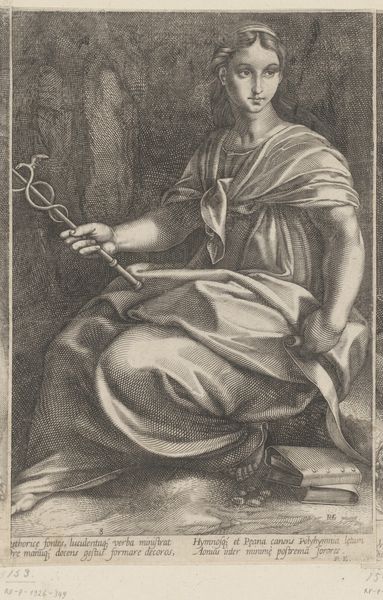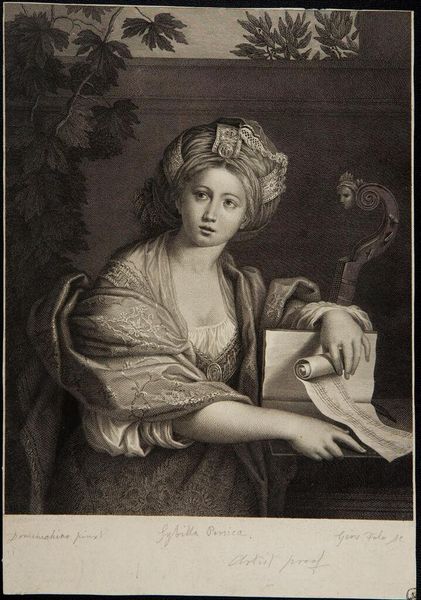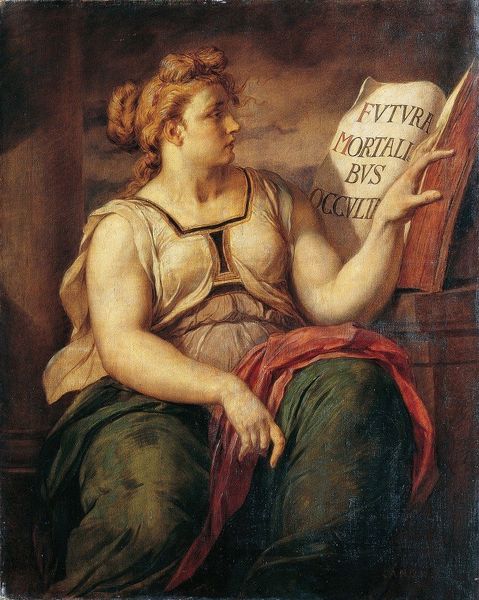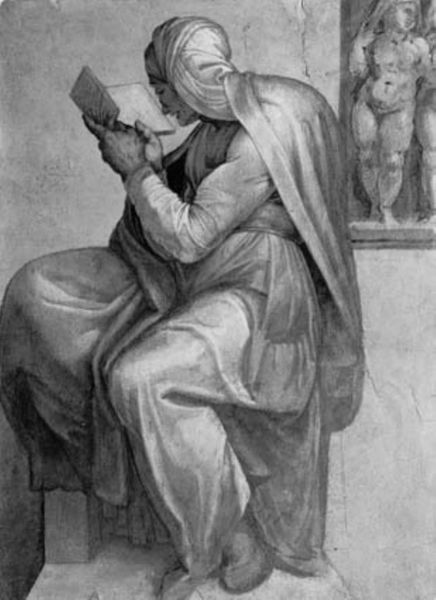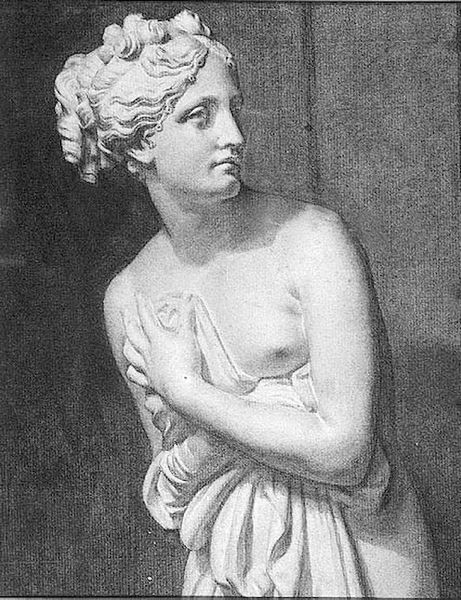
painting, oil-paint
#
portrait
#
baroque
#
portrait
#
painting
#
oil-paint
#
genre-painting
#
northern-renaissance
#
realism
Dimensions: 61 cm (height) x 38.5 cm (width) (Netto)
Curator: This captivating oil painting, believed to be by Bartolomeo Schedoni and dating from around 1593 to 1615, is entitled "Girl with a Hornbook." It currently resides here at the SMK, Statens Museum for Kunst. Editor: My first impression is one of quiet determination. Despite the monochrome rendering and the subject’s youth, she seems incredibly focused. The hornbook she holds becomes this symbol of her agency, this promise. Curator: Absolutely. The hornbook itself is a crucial element. It was, essentially, a primer for children, a sheet of parchment protected by a transparent layer of horn. It represents early literacy, access to knowledge, and, crucially, upward mobility for women during a time when their education was often overlooked, or dismissed. This image becomes so loaded because she is holding that thing that makes all the difference. Editor: You know, that object reminded me right away of other painted objects from the time: rosaries, globes, hourglasses. These weren't just ornaments, right? They had to be instantly recognizable symbols for the audiences of the day. I’d hazard that most viewers instantly grasped the deeper implications of the hornbook, and probably understood what her garment or headdress was suggesting too. Curator: Precisely. Her somewhat austere clothing hints at a modest social status. Her literacy could disrupt the status quo. The realism gives such weight to the representation; a common girl’s literacy becomes aspirational and challenging at once. This challenges traditional gender roles and social expectations. Editor: And you can sense a broader narrative just through that single image. The composition itself contributes, right? The subjects blurred in the background: Are those other students? Is she being instructed? Who decided a girl should learn? The answers to those questions say as much as the work itself. Curator: Indeed. When we delve into its social context, we see the power in presenting a girl, probably from a common background, actively engaged in learning. Her gaze doesn’t implore for acknowledgement. Editor: Well, I'm certainly now seeing how layered this portrait is. It moves beyond simply showing an image. Curator: It is through understanding her placement in society, both in the 16th century and how she continues to represent defiance for audiences, that she still commands consideration. Editor: I agree; now I view "Girl with a Hornbook" through a completely different lens. Thanks for this thoughtful unpacking of Schedoni's cultural messaging!
Comments
No comments
Be the first to comment and join the conversation on the ultimate creative platform.

